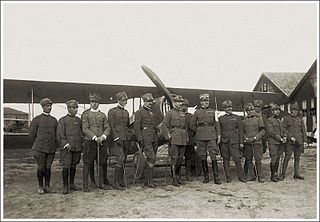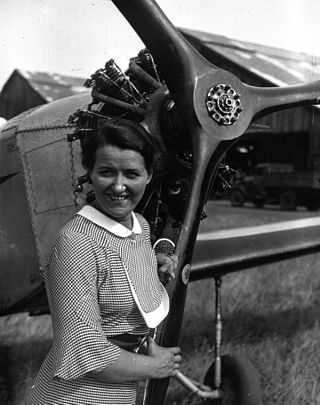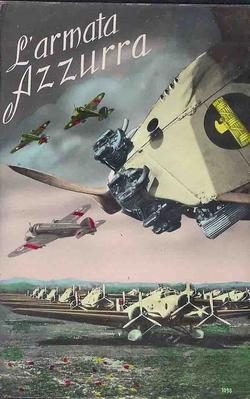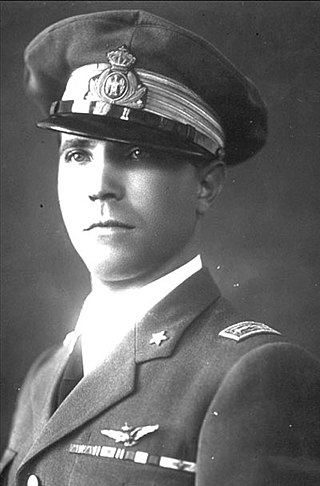Biography
Married to the marquis Ambrogio Negrone (with whom she had a son, Vittorio), she was the first Italian woman to obtain (in 1933) a pilot's license from the Reale Unione Nazionale Aeronautica (RUNA).
A keen sportswoman (swimming, ski, tennis), she preferred flying, an activity that at the time was mainly practised by men, the intended interpreters of the manly dynamism encouraged by Futurism and Fascism.
On 5 May 1934, she established her first personal record by flying at an altitude of 5,544 metres with a Class C seaplane. Following this achievement and with the support of her friend Italo Balbo, she decided to attempt to beat Maryse Hilsz's world record of 11,289 metres. As preparation, she trained as an air force pilot at Guidonia Montecelio airport.
On 20 June 1935, Carina took off from the Guidonia Montecelio base on a Caproni biplane equipped with a Pegasus 1110 engine, taking with her a heated jacket and oxygen cylinder.
Due to air rarefaction and low temperature at high altitude (down to -35 °C), her medical staff did not expect her to fly beyond an altitude of 11,000 metres. However, despite a state of daze (that she referred to as euphoria), through sheer determination she reached 12,043 metres (39,402 feet), [3] thus beating Hilsz's record by 754 metres.
Her record still stands for that category of propeller-powered planes. [4]
She went on to achieve 7 additional flying world records, the last of which was on 19 June 1954, flying from Brescia to Luxor (Egypt) - 2,987 km in 13 hours 34 minutes, at an average speed of 299 km per hour.
In 1951 she took part in an aerial tour of Algeria alongside Ada Marchelli on a Macchi monoplane. She took part in various international competitions and she eventually founded a pilot school.
A commemorative stamp with a face value of L. 750 was issued in her honour by Poste Italiane in 1996. A square has been dedicated to Carina Negrone in her home town. [5]

Italo Balbo was an Italian fascist politician and Blackshirts' leader who served as Italy's Marshal of the Air Force, Governor-General of Italian Libya and Commander-in-Chief of Italian North Africa. Due to his young age, he was sometimes seen as a possible successor of dictator Benito Mussolini.
This is a list of aviation-related events from 1928:

The Savoia-Marchetti SM.75 Marsupiale was an Italian passenger and military transport aircraft of the 1930s and 1940s. It was a low-wing, trimotor monoplane of mixed metal and wood construction with a retractable tailwheel undercarriage. It was the last of a line of transport aeroplanes that Alessandro Marchetti began designing in the early 1930s. The SM.75 was fast, robust, capable of long-range flight and could carry up to 24 passengers for 1,000 miles.

Filippo Zappata was an Italian engineer and aircraft designer. He worked for Officine Aeronautiche Gabardini, Cantieri Riuniti dell'Adriatico (CANT), Blériot, Breda, and Agusta. Zappata was the designer of many record-breaking seaplanes.

Mario de Bernardi (1893–1959) was an Italian World War I fighter pilot, seaplane air racer of the 1920s, and test pilot of early Italian experimental jets.
The Center for Studies and Research on Aeronautical Medicine was an aviation medicine organisation in Guidonia Montecelio.

Alessandro Guidoni served as a general in the Regia Aeronautica. Guidonia Montecelio, the small town and comune where he died while testing a new parachute, was named after him in 1937.

Guidonia Air Base is a military airport in Guidonia Montecelio, Province of Rome, near Rome. It is home to the Italian Air Force's main logistic center.

"G. Paolucci" Airport is an Italian airport located in 'I Piani' in Pavullo, about 2 km south of Pavullo nel Frignano, Italy. The airport is used for general aviation, business aviation, leisure and sport aviation activities, and for civil protection and rescue functions. Inside there is both a flight school for piloting gliders, and a motorized flight school for VDS equipment, basic and advanced, with the possibility of making preparatory flights to the teaching activity.

Maryse Hilsz was a French aviator known for high altitude and endurance flights. She served with the French Resistance during World War II and died in an air crash in 1946.

L'Armata Azzurra is a 1932 Italian aviation docu-drama and adventure film directed by Gennaro Righelli and starring Germana Paolieri and Ennio Cerlesi. It was Italy's first aviation drama film, with a fictional story that celebrated the Italian Air Force.

Stefano Cagna was an Italian aviator, a Brigadier General of the Italian Royal Air Force, he fought in World War II and was decorated with the gold medal for valour in memory.
Claire Roman was a French aviator. In the 1930s she participated in speed races and broke world records for altitude and speed, and completed a long-distance flight to India. During World War II Roman served in the French Air Force and was captured by the Germans. She escaped and continued to fly until her death in 1941 as a passenger on a civilian flight which crashed in bad weather.

Arturo Ferrarin was an Italian pioneer aviator. His exploits included winning the "Rome-Tokyo Raid" air race in 1920 and a non-stop flight from Italy to Brazil in 1928 with fellow aviator Carlo Del Prete. The latter flight set the world distance record for a non-stop flight. Ferrarin, who was born in Thiene and was a decorated veteran of the Italian Royal Air Force during World War I, died in a plane crash at Guidonia Montecelio in 1941.

The Decennial Air Cruise was a mass transatlantic flight from Orbetello, Italy, to the Century of Progress International Exposition, Chicago, Illinois. The expedition, organized by the Italian Regia Aeronautica, began on July 1, 1933, and ended on August 12 of the same year. It consisted of 25 Savoia-Marchetti S.55X seaplanes crossing the Atlantic Ocean in formation, forming the greatest mass flight in aviation history. The Italian Squadrons, led by General Italo Balbo, were welcomed enthusiastically in the Netherlands, the UK, Iceland, Canada and particularly in the United States of America, where they became known as the Italian Air Armada. A publicity success for Fascist Italy, Balbo further viewed the expedition as a pioneering step towards commercial flights across the Atlantic.

Madeleine Charnaux was a French war correspondent, sculptor, designer and aviator. She was the first woman in the Roland Garros pilots’ club.

Alberto Briganti was a General in the Regia Aeronautica during World War II, and in the Aeronautica Militare after the war.

Aldo Pellegrini was an Italian Air Force general during World War II.

Attilio Biseo was an Italian aviator, powerboat racer, Air Force general during World War II, and the personal pilot of Benito Mussolini during the 1930s.

Mario Bernasconi was an Italian Air Force general during World War II. He commanded the Reparto Speciale Alta Velocità during the interwar period, the Aviazione Legionaria during the Spanish Civil War, and the 5th Air Fleet in North Africa during World War II.

















